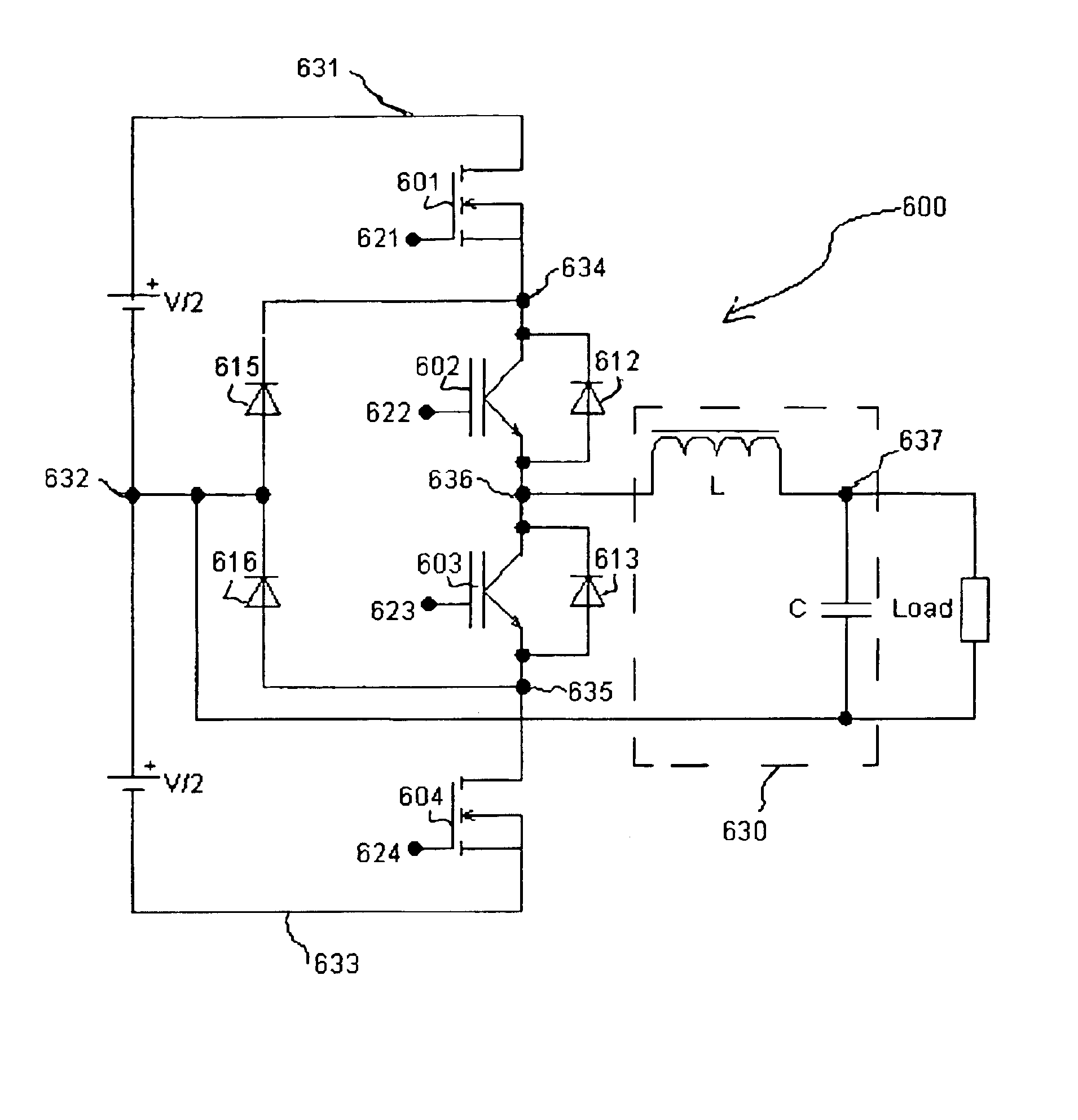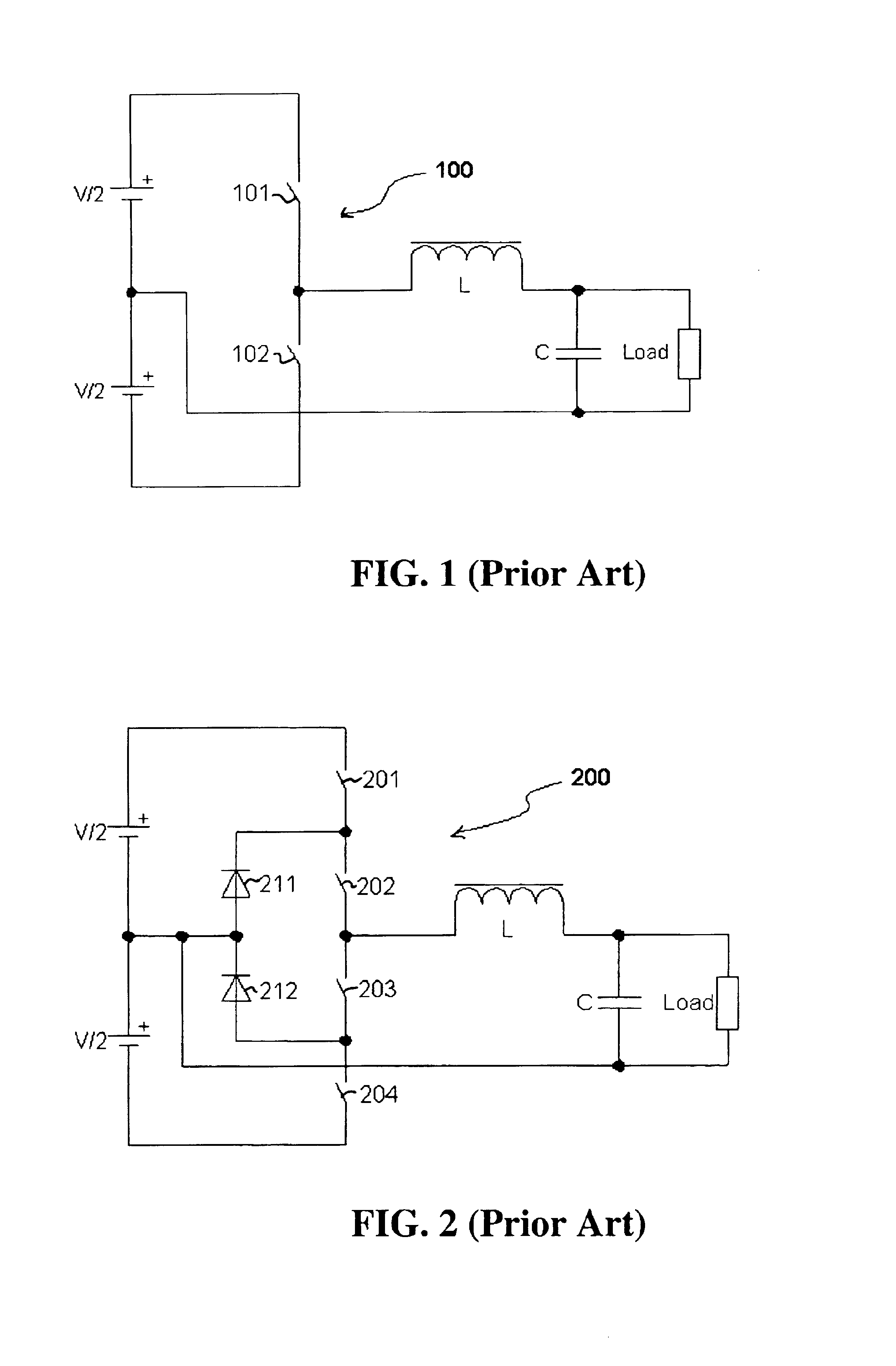Three level inverter
a three-level inverter and pulse width technology, applied in pulse technique, process and machine control, instruments, etc., can solve the problems of low frequency, low cost, and significant switching loss of inverter transistors
- Summary
- Abstract
- Description
- Claims
- Application Information
AI Technical Summary
Benefits of technology
Problems solved by technology
Method used
Image
Examples
Embodiment Construction
class="d_n">[0021]FIG. 7 is a comparison of prior art control signals and control signals used by the inverter of FIG. 6; and
[0022]FIG. 8 is a graphical comparison the ripple current through the output filter choke and voltage at the output of the filter stage used by the inverter of FIG. 6.
[0023]FIG. 9 is a plot of zero crossing distortion from certain control signals of FIG. 7.
[0024]FIG. 10 is a schematic of alternative embodiment control signals.
DETAILED DESCRIPTION OF THE INVENTION
[0025]The invention relates to systems and methods for generating a three-level electrical output.
[0026]FIG. 5 shows an embodiment of the invention directed to an offline uninterruptible power supply (UPS) 500. The UPS 500 includes an input filter / surge protector 12, a transfer switch 14, a controller 16, a battery 18, a battery charger 19, an inverter 600, and a DC-DC converter 23. The UPS also includes an input 24 for coupling to an AC power source and an outlet 26 for coupling to a load.
[0027]The UP...
PUM
 Login to View More
Login to View More Abstract
Description
Claims
Application Information
 Login to View More
Login to View More - R&D
- Intellectual Property
- Life Sciences
- Materials
- Tech Scout
- Unparalleled Data Quality
- Higher Quality Content
- 60% Fewer Hallucinations
Browse by: Latest US Patents, China's latest patents, Technical Efficacy Thesaurus, Application Domain, Technology Topic, Popular Technical Reports.
© 2025 PatSnap. All rights reserved.Legal|Privacy policy|Modern Slavery Act Transparency Statement|Sitemap|About US| Contact US: help@patsnap.com



